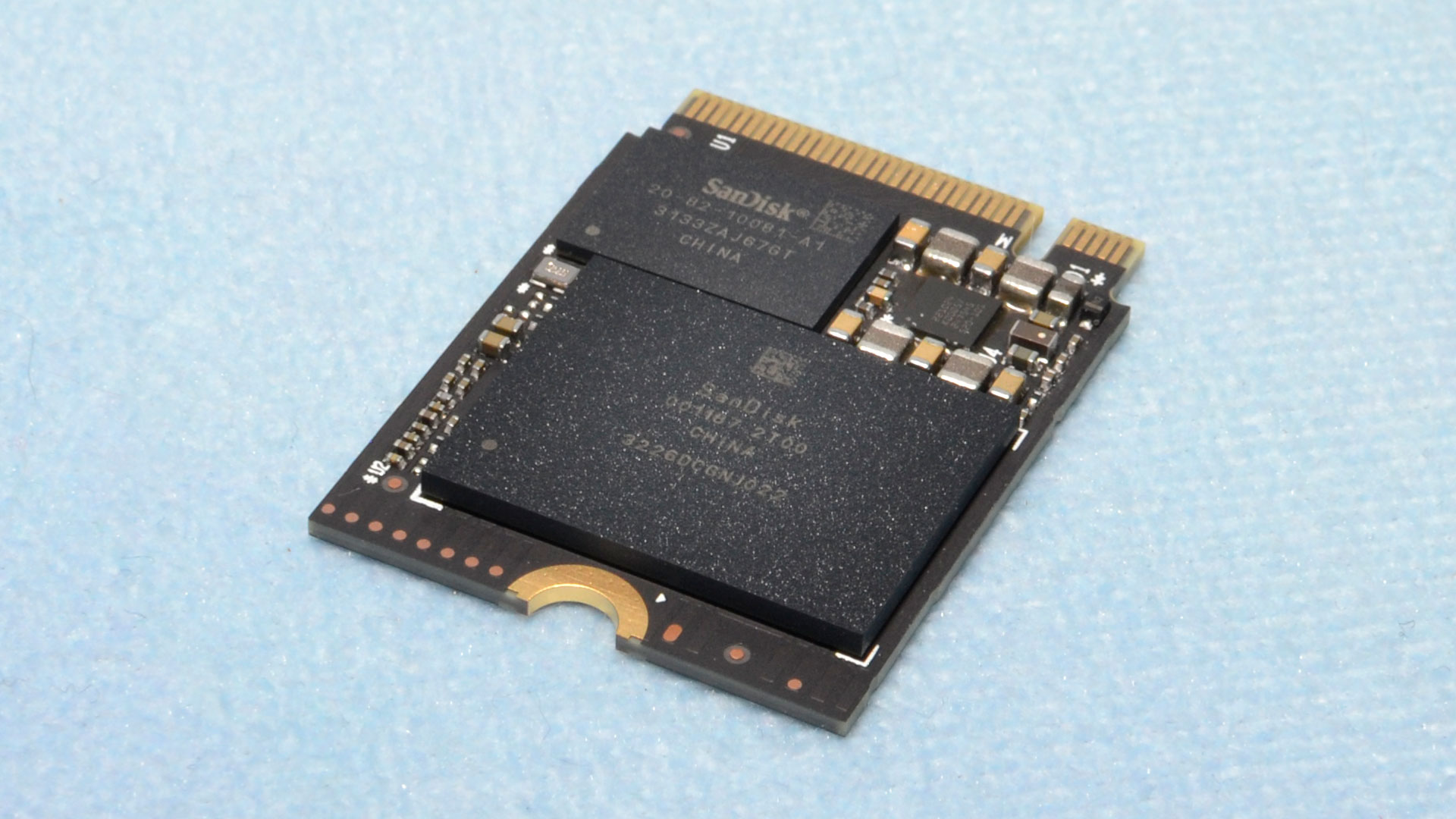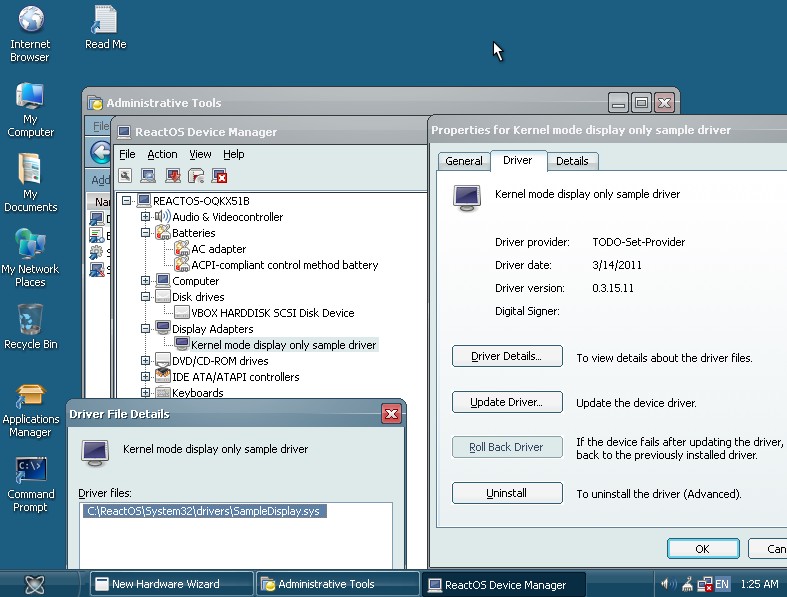You no longer have to choose between having only 1TB of storage space or accepting the drawbacks of a QLC SSD for your Steam Deck, ASUS ROG Ally, or other M.2 2230-friendly portable gaming device. The PC SN740 has been a popular 2TB OEM solution for its single-sided, TLC goodness, but now WD has put out a shortened retail version of its excellent Black SN770 with the Black SN770M. This SSD follows in the footsteps of other manufacturers trying to get in on the “mobile” market with their own 2230 SKUs. It rewards your patience with excellent all-around performance, but does not come without its caveats.
As space and battery life are both limited with portable devices, it’s not uncommon to see M.2 2230 or 2242 SSD slots used for internal storage. The former has much better options right now, and, luckily, 2230 drives can be extended to 2242 or even 2280 with inexpensive adapters. However, single-sided drives are required or are at least optimal for these devices, which, combined with the shortened form factor, means diminished capacity. Denser flash is one option, but usually this requires switching to QLC, a flash type that has the reputation of being slower and less consistent. Therefore, the SN770M’s ability to bring TLC to a 2TB 2230 drive is its biggest selling point.
It doesn’t hurt that the drive performs quite well, which is unsurprising as the regular SN770 tested well and remains extremely popular. The OEM SN740 has long been available, but official retail availability and support are very welcome in this space. However, there are trade-offs for this level of performance and capacity, as the SN770M can pull a lot of power and put off a lot of heat – this is troubling for battery-dependent, portable devices. As you’re already opening a device to install an SSD upgrade, it’s probably wise to improve cooling accommodations. Beyond that, the SN770M’s advantages also need to be weighed against the cost savings provided by the QLC alternatives.
Specifications
| Product | 500GB | 1TB | 2TB |
|---|---|---|---|
| Pricing | $79.99 | $109.99 | $239.99 |
| Row 1 – Cell 1 | Row 1 – Cell 2 | Row 1 – Cell 3 | |
| Form Factor | M.2 2230, Single-Sided | M.2 2230, Single-Sided | M.2 2230, Single-Sided |
| Interface / Protocol | PCIe 4.0 x4 / NVMe 1.4 | PCIe 4.0 x4 / NVMe 1.4 | PCIe 4.0 x4 / NVMe 1.4 |
| Controller | SanDisk 20-82-10081-A1 | SanDisk 20-82-10081-A1 | SanDisk 20-82-10081-A1 |
| DRAM | N/A (HMB) | N/A (HMB) | N/A (HMB) |
| Memory | WD/Kioxia 112-Layer TLC (BiCS5) | WD/Kioxia 112-Layer TLC (BiCS5) | WD/Kioxia 112-Layer TLC (BiCS5) |
| Sequential Read | 5,000 MB/s | 5,150 MB/s | 5,150 MB/s |
| Sequential Write | 4,000 MB/s | 4,900 MB/s | 4,850 MB/s |
| Random Read | 460K | 740K | 650K |
| Random Write | 800K | 800K | 800K |
| Security | N/A | N/A | N/A |
| Endurance (TBW) | 300TB | 600TB | 1,200TB |
| Part Number | WDBDNH5000ABK-WRSN | WDBDNH0010BBK-WRSN | WDBDNH0020BBK-WRSN |
| Warranty | 5-Year | 5-Year | 5-Year |
The WD Black SN770M, or SN770M for short, is available at 500GB, 1TB, and 2TB capacities. It lacks the 250GB SKU of the standard WD Black SN770. However, if you’d like to go with a smaller drive, this capacity is covered by the 256GB Sabrent Rocket 2230. Alternatively, the OEM WD PC SN740 has a 256GB model. The difference in overprovisioning between 250GB and 256GB SKUs is largely irrelevant for the intended purposes of these shorter drives.
Currently, the SN770M is priced at $79.99, $109.99, and $239.99 for each of the three capacities. This presents a bit of a problem as this drive is most desirable at 2TB because it offers TLC at that capacity while the alternatives are QLC. These alternatives are currently between $160 and $200, with the possibility of decent savings over the SN770M. WD’s solution is also not priced competitively at the lower capacities, where TLC competitors are ample in number. The 512GB and 1TB Rocket 2230s are $59.99 and $89.99 at the time of review. We suspect the SN770M’s prices will quickly align, but we’d wager the 2TB SKU is going to be the supremely popular one, anyway.
The specifications are otherwise identical to the SN770, hitting up to 5,150 MB/s / 4,900 MB/s for sequential reads and writes and up to 740K/800K for random read and write IOPS. All models are backed by a five-year warranty and up to 600TB of write endurance per TB capacity. Even though we’re only dealing with sixteen dies at 2TB, there is a decline in performance – with sequential writes and random read IOPS – due to the need and use of denser dies. The SN770M will still perform above and beyond QLC alternatives, but it hints that future 2TB TLC-based 2230 drives might do the job better.
Software and Accessories
Western Digital has two downloads available on its site for internal SSDs: the Western Digital Dashboard and Acronis True Image. Both work under Windows, and the latter also works on macOS. You should engage in drive operations with a PC before installing the SN770M into your Steam Deck or other portable gaming device if it’s running SteamOS or ChimeraOS, to provide the smoothest process. Most devices, like ASUS’s ROG Ally, come with Windows 11 out of the box, so this is not a problem. It’s also possible to multi-boot with the proper configuration or use a compatibility layer; however, be aware that firmware updates don’t play well with USB enclosures.
Software support can be one advantage to buying a retail SSD, like the SN770M, over an OEM variant, like the SN740. The Digital Dashboard is WD’s inclusive storage toolbox with all the expected functions included and might be considered a must-have for some users. You can grab information about your drive(s) and operating environment, check a drive’s health condition, modify feature states, update the firmware, etc. Acronis True Image lets you conveniently image and clone drives, which can be useful for storage upgrades.
A Closer Look
The SN770M comes in nice retail packaging. This offers peace of mind to those who might not like to deal with OEM products from AliExpress, eBay, etc. While sites like CDW, Framework, and iFixit have made buying OEM SKUs more comfortable, we’re seeing more companies put out retail and 2230 versions of their drives. Other recent converts include Seagate’s SN520M and Silicon Power’s UD90 2230, to name just two.
The die package looks relatively thick, but you should have no problem fitting it in compliant devices. Some modifications may be required for shielding. It’s important not to look at the label and make assumptions about power draw from the rated voltage and amperage. However, in this case, it is a pretty accurate accounting for the rated peak power draw of 6.3W when you consider the ±5% voltage tolerance. We measured an actual peak in our testing just below 5W. Drives should not be compared at face value, though, especially when considering efficiency.
The SN770M is single-sided which is, of course, its primary appeal for a 2TB 2230 SSD. This makes it compatible with a wide range of devices that do not officially support double-sided drives. This includes devices with longer slots, as it is possible to get an M.2 extension adapter, although typically, this is used with 2242 slots and not 2280. It is possible to saw down some M.2 SSDs, but that is not the case with the regular SN770, and we do not recommend it, regardless.

The SN770M has the same powerful controller as the SN770 and appears to use 1Tb dies of 112-Layer BiCS5 NAND flash. This controller has been used to good effect on the WD Blue SN580 with a different revision, and older variants have found their way onto several WD’s drives, including the Blue SN550 and SN570. As this is 16nm technology, there are some concerns that it will pull more power and put out more heat than 12nm solutions like Phison’s E21T and SMI’s SM2269XT.
This comparison would also apply to the 12nm InnoGrit IG5220 and Maxio MAP1602 SSD controllers, which we haven’t reviewed yet on 2230 SSDs, not to mention upcoming controllers like Phison’s E27T. Some of these can and will push more bandwidth than the SN770M and will also be paired with 232-Layer or newer flash, potentially enabling a greater number of 2TB TLC options for 2230.
The SN770M’s flash is also only 112-Layer, and it lacks the improvements found with Micron’s CMOS-under-Array (CuA), Samsung’s Cell-Over-Periphery (COP), SK hynix’s “4D” Periphery-Under-Cell (PUC), and YMTC’s wafer-on-wafer Xtacking technologies. We would assume that this flash will be less power efficient as a result. WD is also using 1Tb dies to achieve this type of package density, which has its own challenges that can impact performance and/or efficiency. With all that said, this flash has often performed better than expected, and it’s become a popular choice in many drives to save cost, particularly for capacity.
MORE: Best SSDs
MORE: Best Hard Drive
MORE: Best SSD for Steam Deck







